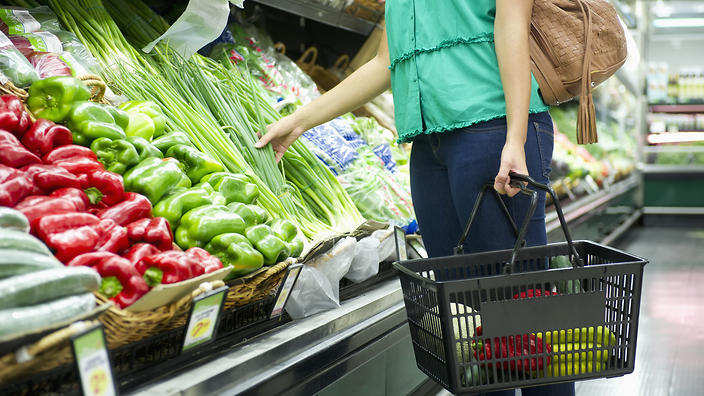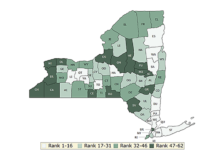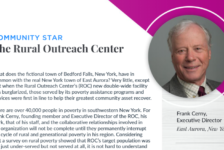By Ashley Paro, St. Lawrence University
Food insecurity or a lack of availability to low-cost healthy foods is common in rural areas where distance to grocery stores is far and the quality of food may be lower.
Convenience stores are often more prevalent in areas with lesser access to grocery stores. Many of these  establishments have high amounts of cheaper ultra-processed foods which have been shown to be linked to heart diseases, obesity, postmenopausal breast cancer, depression and various cancers (Chen et al., 2020). Convenience stores have also been linked with higher diabetes rates in many rural counties regardless of income (Haynes-Maslow & Leone, 2017).
establishments have high amounts of cheaper ultra-processed foods which have been shown to be linked to heart diseases, obesity, postmenopausal breast cancer, depression and various cancers (Chen et al., 2020). Convenience stores have also been linked with higher diabetes rates in many rural counties regardless of income (Haynes-Maslow & Leone, 2017).
Sometimes these diabetes rates can go unnoticed in areas where health care access is limited. Between 2005 and 2014, people with undiagnosed diabetes were 81% more likely to be food insecure (Walker et al., 2019).
However, having access to food isn’t always the biggest problem. Oftentimes, the available food options are sold at a higher price which can make buying essential foods difficult for lower-income families. As of 2018, the rural New York per capita income is more than $25,000 lower than the average per capita income of New York State (Rural Health Information Hub, 2020). Families living in these areas must find cheaper food options which usually involves buying less nutritious foods.
The impact of eating a nutrient deficient diet is most concerning when looking at populations of rural children. In 2019, homes where children were living had a higher percentage of food insecurity than the national average (USDA, 2020). Food insecurity had been shown to be linked with several serious chronic diseases in children and adults including iron deficiency anemia, asthma, mental health issues, obesity, and coronary heart disease (Food Research and Action Center, 2017). A 4% higher percentage of children from rural areas in the United States are overweight or obese compared to children of the same age from urban locations (Campbell, 2017).
The COVID-19 pandemic has only exacerbated the levels of food insecurity around the world. New York Governor Cuomo has begun expanding eligibility for SNAP (Supplemental Nutrition Assistance Program) benefits for people with disabilities, older adults, and college students of lower incomes to allow for greater access to healthy foods. SUNY Chancellor Jim Malatras commented “Food insecurity continues to be a significant struggle for far too many Americans, and New York State has been a leader in our approach to getting resources to those most in need—through food banks on every college campus or nearby, and through innovative programs like mobile food trucks, local farm crop sharing, and even gardens on campus” (State expands SNAP, 2020).
To end on a happy note, the prevalence of food insecurity had significantly decreased between 2018 to 2019 (USDA, 2020) and various approaches will help to keep the nation on a downward trend of food insecurity through 2020.
NYSARH members are part of the solution…
- The St. Lawrence Health Initiative has a Creating Healthy School and Communities program that aims to lessen factors that contribute to rates of obesity, diabetes, and other chronic diseases in high-need school districts and their related communities.
- Rural Health Network of South Central NY has a Farm to School program that aims to increase access to local healthy foods and agriculture education by including local foods into school meals and involving students in their local food system.
- Seven Valleys Health Coalition has provided aid during the COVID-19 pandemic by keeping up to date information on local food pantry operation on the 2-1-1 database, helping with food distribution events, and securing relief funding to purchase essential food stores in Cortland County.
Sources
Campbell, E. A., Shapiro, M. J., Welsh, C., Bleich, S. N., Cobb, L. K., & Gittelsohn, J. (2017). Healthy Food Availability Among Food Sources in Rural Maryland Counties. Journal of hunger & environmental nutrition, 12(3), 328–341. https://doi.org/10.1080/19320248.2017.1315328
Chen, X., Zhang, Z., Yang, H. Qiu, P., Wang, H., Wang, F., Zhao, Q., Fang, J., & Nie, J.(2020). Consumption of ultra-processed foods and health outcomes: a systematic review of epidemiological studies. Nutr J, 19, 86. https://doi.org/10.1186/s12937-020-00604-1
Food Research and Action Center. (2017). The impact of poverty, food insecurity, and poor nutrition on health and wellbeing. https://frac.org/wp-content/uploads/hunger-health-impact-poverty-food-insecurity-health-well-being.pdf
Haynes-Maslow, L., Leone, L.A. (2017). Examining the relationship between the food environment and adult diabetes prevalence by county economic and racial composition: an ecological study. BMC Public Health, 17, 648. https://doi.org/10.1186/s12889-017-4658-0
Rural Health Information Hub. (2020). New York. https://www.ruralhealthinfo.org/states/new-york#:~:text=According%20to%20the%20USDA%20Economic,urban%20areas%20of%20the%20state
State expands SNAP food program. (2020, October 17). Rome Sentinel. https://romesentinel.com/stories/state-expands-snap-food-program-changes-to-aid-older-adults-disabled-individuals-and-community,105460
USDA Economic Research Service. (2020). Food security in the U.S.: Key statistics and graphics. https://www.ers.usda.gov/topics/food-nutrition-assistance/food-security-in-the-us/key-statistics-graphics.aspx#:~:text=Food%2Dinsecure%20households%20include%20those,from%2011.1%20percent%20in%202018
Walker, R. J., Grusnick, J., Garacci, E., Mendez, C., & Egede, L. E. (2019). Trends in food insecurity in the USA for individuals with prediabetes, undiagnosed diabetes, and diagnosed diabetes. Journal of General Internal Medicine, 34(1), 33. doi: http://dx.doi.org/10.1007/s11606-018-4651-z




Pingback: The Impact of Food Insecurity on Rural Communities – NCPPC